Newly-appointed education minister Dharmendra Pradhan is confronted with the challenge of scaling two mountains simultaneously — repairing huge damage suffered by the education system during 60 weeks of pandemic lockdown, and implementing NEP 2020, writes Dilip Thakore
With General Election 2024 looming on the distant horizon and the legislative assembly election of Uttar Pradesh, India’s most populous state (240 million) that sends 80 MPs to the Lok Sabha, the lower house of Parliament, scheduled for February next year, there is a hint of desperation within the top leadership of the Bharatiya Janata Party which dominates the BJP/NDA government at the Centre.
Although the malignant challenge of the novel Coronavirus which migrated to India from the neighbouring People’s Republic of China in early 2020, forced a lockdown of business and industry and wreaked havoc on the economy, has been substantially met with a national vaccination campaign, the fast-mutating virus is still infecting citizens, taking lives and destroying livelihoods. The economic turnaround that the country requires is nowhere in sight and the predicted rate of economic growth at 9-10 percent in fiscal 2021-22 on the low base of the pandemic year, will at best restore the status quo ante of 2019-20, while inflation and unemployment are indicating upward trajectories.
These ominous auguries explain the night-of-the-long-knives Union cabinet reshuffle of July 7 in which prime minister Narendra Modi axed some of the most senior ministers of the seven-year BJP/NDA government and replaced them with new, younger cabinet members. Among the casualties were Union health minister Harsh Vardhan, information and broadcasting minister Prakash Javadekar, information technology and law minister Ravi Shankar Prasad, and most notably, education minister Dr. Ramesh Pokhriyal, a Hindi language pulp fiction writer and hindutva revivalist who presided over masterly inactivity during his two-year stint in Shastri Bhavan, Delhi, headquarters of the Union education ministry.
The new incumbent of Shastri Bhavan is Dharmendra Pradhan, hitherto Union minister of petroleum and natural gas where he earned good notices for resisting intense public pressure to reduce petrol and diesel prices which are among the highest worldwide, and implemented the Pradhan Mantri Ujjwala Yojana (PMUY) providing subsidised cooking gas cylinders to over 200 million socio-economically underprivileged households. Not a few media pundits believe that success of the Ujjwala scheme contributed substantially to the BJP’s sweeping victory in General Election 2019, and in the UP legislative assembly election held shortly thereafter.

Dharmendra Pradhan (centre) with education ministers of state Annpurna Devi Yadav & Dr. Subhas Sarkar: arduous mission
“Dharmendra Pradhan is a rising star of the BJP who enjoys the confidence of prime minister Narendra Modi and Union home minister Amit Shah who call the shots in the BJP/NDA government. During his tenure in the petroleum and natural gas ministry, Pradhan did a fairly good job of implementing the Ujjwala scheme which required a large number within the middle class to surrender their gas cylinder subsidies to enable the distribution of highly-subsidised cylinders to bottom-of-pyramid households. Undoubtedly, he has programme implementation capabilities. But on the downside, as a former ABVP president, he has a strong connect with the RSS and I doubt if he will be able to overhaul and modernise India’s moribund education system,” says veteran Delhi-based journalist Ajoy Bose (Patriot, Sunday, Sunday Observer and The Guardian, UK).
Although media pundit and BJP Rajya Sabha MP Swapan Dasgupta mysteriously declined to endorse him, Dr. Geeta Bhatt, director of Delhi University’s Non-Collegiate Women Education Board and “ideologically connected” with BJP, believes that Pradhan’s good track record in the petroleum and natural gas and skills development ministries makes him the best person to implement the National Education Policy (NEP) 2020. “Over 80 percent of the country’s annual education budget is spent by state governments. With his experience of the vocational skills development ministry and good people management skills, Pradhanji is likely to persuade state governments to cooperate with the Centre to implement NEP 2020,” says Bhatt, who also spiritedly defends the party on television talk shows.
However, Pradhan’s promotion to the Union education ministry is likely to prove an arduous mission for this relatively young (52) and energetic minister who earned plaudits in his capacity as junior minister of entrepreneurship and skills development (2017-2019). For the simple reason that human capital development, and particularly modernisation of India’s moribund education system, has never been a priority of the BJP and especially of the Rashtriya Swayamsevak Sangh (RSS), the shadowy ideological and cultural mentor organisation of the party. It’s worth noting that the RSS runs its own Vidya Bharati schools nationwide whose number is estimated at 12,820 formal and 11,500 informal schools with an aggregate enrolment of 3.5 million children (2019). In addition, several RSS-affiliate organisations such as VHP, ABVP (Akhil Bharatiya Vidyarthi Parishad) and BKS (Bharatiya Kisan Sangh) collectively known as the sangh parivar (RSS family), run hundreds if not thousands of schools and even higher education institutions whose focus is valorisation of the glories of pre-Mughal India and highlighting atrocities and humiliation of the Hindu majority by foreign, especially Muslim, rulers from the 16th century onwards. The RSS and BJP have little time or respect for the egalitarian and secular values of the Constitution of India, and believe it’s payback time for the country’s Muslim and Christian minorities. They should be cut to size and reduced to second class citizenship.
According to the grapevine in Delhi, right from the time the first BJP government was elected to power at the Centre in 1999 and again in 2014, when the party’s leadership made noises about pressing ahead with liberalisation of the economy — anathema to RSS top brass — initiated by the Congress in 1991, a compact was made that RSS sympathisers would be awarded the HRD/education ministries at the Centre and BJP-ruled states. Proof of this assertion is that since then, all education ministers have been former RSS members and/or sympathisers.
The first of them, the late Dr. Murli Manohar Joshi who served in the Vajpayee government (1999-2004) introduced astrology as a degree programme in universities and made an abortive backdoor takeover of India’s premier IIMs (Indian Institutes of Management) by proposing to slash their already modest residential tuition fees from Rs.1.5 lakh per year to Rs.30,000, to make the managements of these government-promoted B-schools abjectly dependent on Central largesse. Following strong criticism in the media (especially EW) the BJP was unexpectedly routed in General Election 2004 and Joshi lost his Allahabad seat.
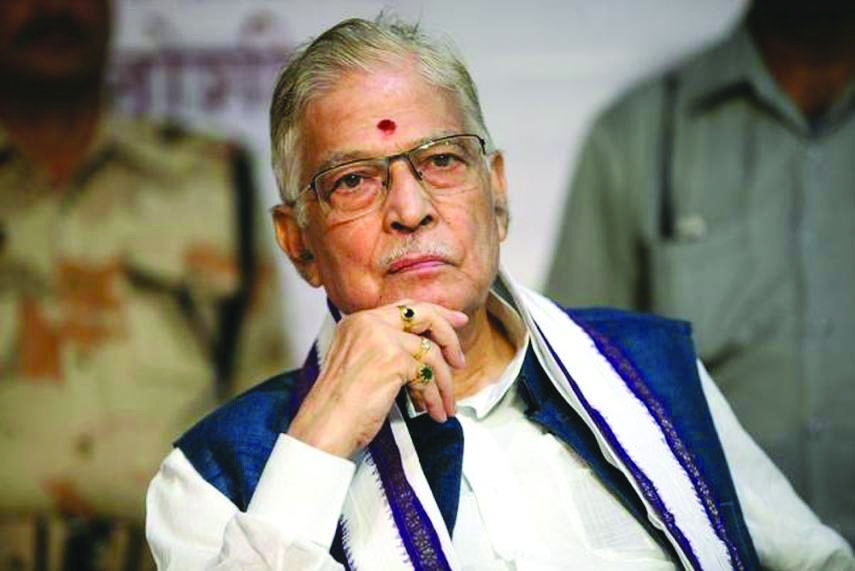
Murli Manoohar Joshi
Subsequently, when the BJP/NDA alliance swept to power in 2014 after the collapse of the Congress-led UPA alliance which served two scandals-tainted terms in office at the Centre (2004-14), prime minister Narendra Modi whose own academic credentials are shrouded in mystery, appointed former television soap opera star Smriti Irani as Union HRD (human resource development, aka education) minister. During her two-year term in Shastri Bhavan which she ruled with an iron hand, Irani (who it was discovered had falsely claimed to be a Delhi University graduate in her election nomination form), a committed RSS sympathiser, resurrected Joshi’s bid for backdoor takeover of the IIMs, which again was fiercely resisted by your editors (see https://www.educationworld.in/hostile-takeover-bid-2-0) and the media, and prompted her transfer to the Union textiles ministry in July 2016.
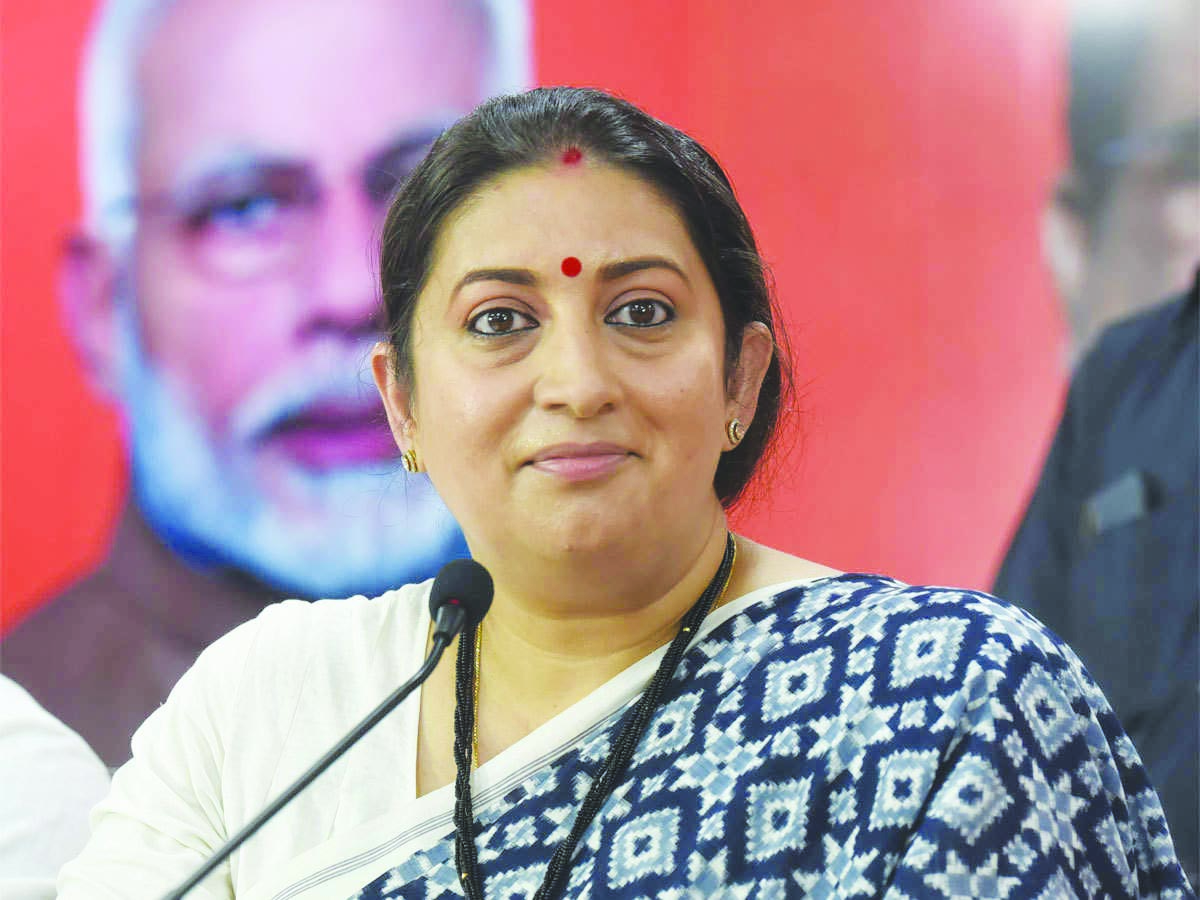
Smriti Irani
Irani was succeeded in Shastri Bhavan by Prakash Javadekar, a former RSS karyakarta (foot-soldier). Although well-mannered, articulate and accessible to the media, Javadekar was obliged to reject the New Education Policy 2016 recommendations of the high-powered T.S.R. Subramanian Committee, which made sensible proposals to establish an Indian Education Service, grant substantial autonomy to universities, and raise the national outlay for education (Centre plus states) to 6 percent of GDP (first recommended by the Kothari Commission in 1966) “without further delay”.
These recommendations didn’t sit well with RSS priorities which were to rewrite social science, especially history, school textbooks from the hindutva perspective and pack institutions of higher education with right-wing sangh parivar under-qualified intellectuals. Moreover with then Union finance minister, the late Arun Jaitley, slashing the Centre’s 2015-16 education budget even in nominal terms, there was little chance of the Subramanian Committee’s Report being accepted by the then newly elected BJP leadership. Instead, the 217-page report prepared by the high-powered committee chaired by former Union cabinet secretary Subramanian, widely respected for his integrity and plain-speaking, was reduced to a mere “input” for a new policy to be formulated after wider consultations.
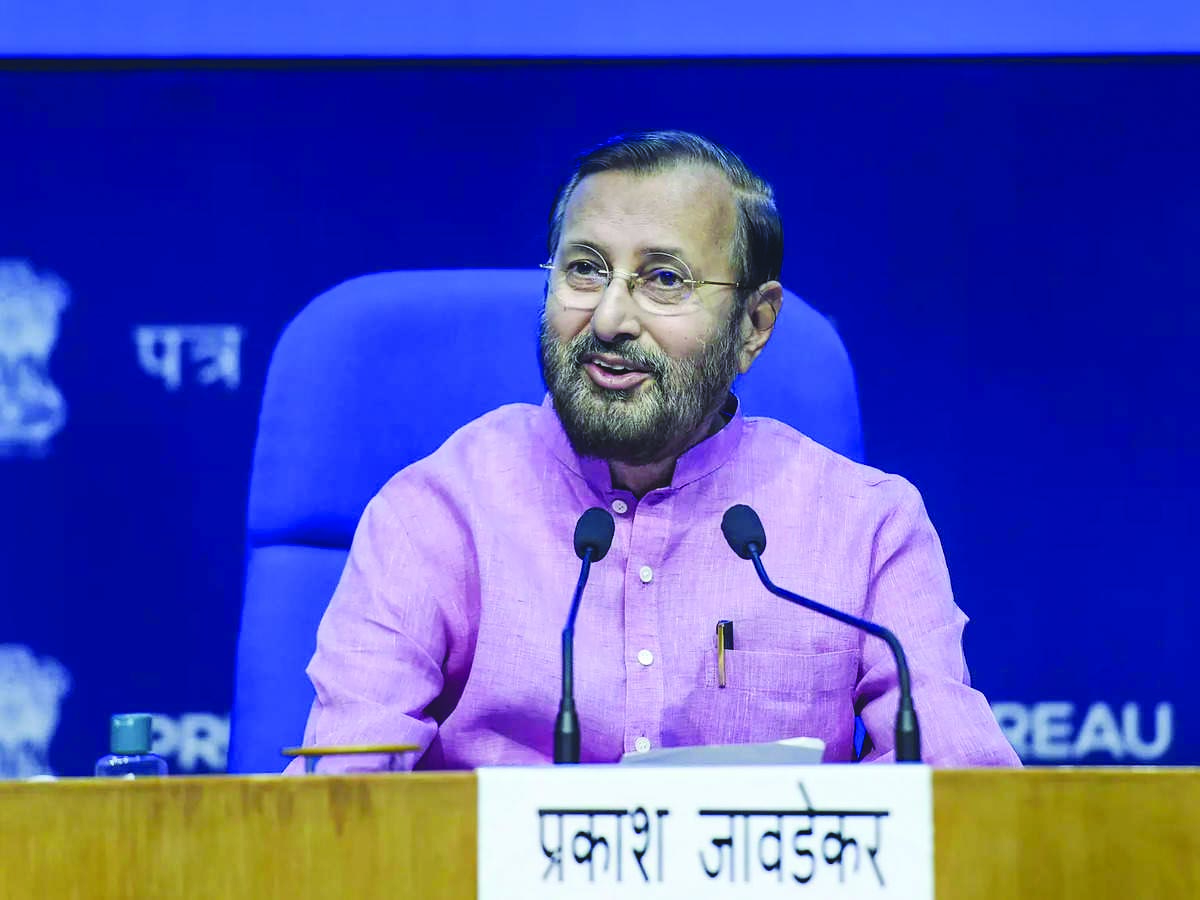
Prakash Javadekar
Subsequently in 2017 a new committee was constituted under the chairmanship of outer space scientist Dr. K. Kasturirangan, for Research Organisation to provide a new draft of the National Education Policy. Comprising senior and retired higher education academics with no representative of private schools and colleges, although 48 percent of India’s in-school children are in private schools and 70 percent in private higher education institutions, in December 2018, the KR Committee produced a “more government more governance” 484-page report. Inevitably, some commendable reforms were proposed. Among them: strong emphasis on professionally administered early childhood functional literacy and numeracy; division of government’s role of provider, regulator and assessor of school and higher education. To this end, the KR Committee recommended the establishment of separate institutions for regulating, testing and accreditation of school and higher education institutions, a proposal widely welcomed.
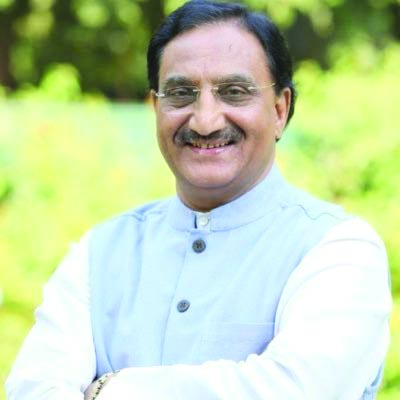
Ramesh Pokhriyal
Yet, the fatal flaw of the KR Committee as detailed in a 16-page EW cover feature evaluation of the KR Committee’s 484-page report (EW, July 2019) was that it reposed touching faith in the bona fides and capabilities of educrats of the Central and state governments — who have miserably failed to deliver good quality education in the country’s 1.20 million government primary-secondary schools and higher education institutions for over seven decades — to spearhead the ambitious reforms proposed by it. Somewhat naively, the KR Committee’s report recommended that numerous independent autonomous supervisory and regulatory bodies chaired and staffed by academics with excellent track records and “unimpeachable integrity” should be established by government to reform and rejuvenate the country’s school and higher education systems.
Curiously, the members of the committee were/are unaware that such individuals are rare in the country’s highly politicised higher education system, and the likelihood is that offices of profit in the proposed regulatory bodies will be packed with acolytes and sympathisers of ruling parties at the Centre and in the states.
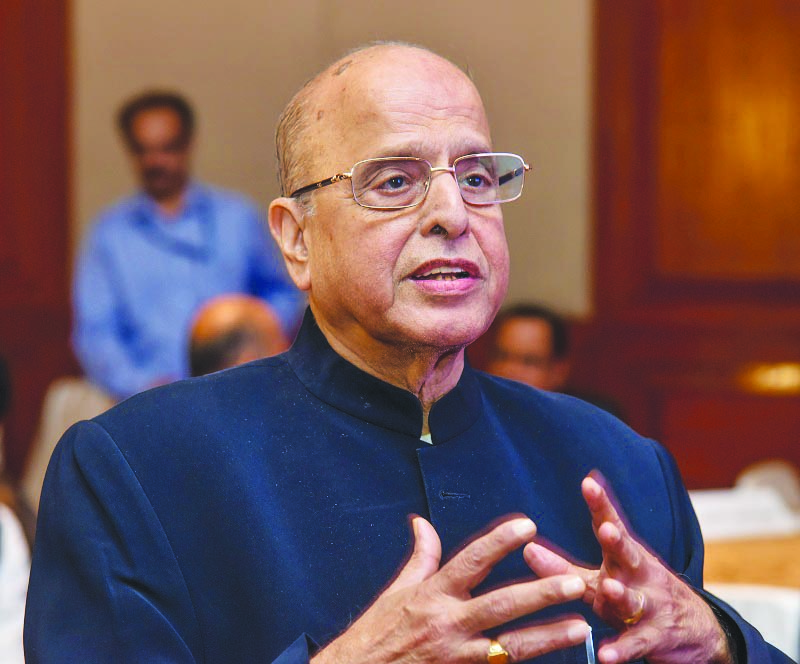
Kasturiranagan
Moreover, the anti-private education prejudice of the KR Committee report is evident in NEP 2020 which is beginning to be rolled out across the country. On the issue of state governments regulating and adjudicating school tuition and other fees — the biggest pain point of private school managements — NEP 2020 is conspicuously silent. Ditto about “partial backdoor nationalisation” of private schools effected through s.12 (1) (c) of the RTE Act which obliges private day schools to reserve 25 percent capacity in elementary classes (I-VIII) for poor children — as certified by state and local governments — in their neighbourhood. NEP 2020 is also silent about legislation enacted by most state governments capping fees levied by private schools at unrealistically low levels, and about s.19 of the RTE Act which stipulates impossible infrastructure norms for private schools. This provision was deliberately inserted into the RTE Act to drive the country’s estimated 400,000 budget private schools (BPS), which are attracting government school students by droves, out of business.
Since membership of the KR Committee almost entirely comprised senior and retired higher education academics, its recommendations for restructuring and reforming the country’s languishing higher education system which churns out millions of unemployable graduates every year, are more promising.
The committee’s proposals of four-year undergrad degree programmes with a foundational year of liberal arts learning for all study programmes; certified multiple exit and re-entry options and a system of credits to be stored in a national ABC (academic bank of credits) digital repository; phasing out the system of undergrad colleges affiliating with parent universities, and graded autonomy for undergrad colleges under a ‘light but tight’ regulatory framework; establishment of a National Research Foundation and permitting top-ranked foreign universities to set up campuses in India have been widely welcomed by academia. Moreover, an important recommendation of the KR Committee to separate the functions of regulation, accreditation, funding and academic standards setting have also been incorporated into NEP 2020.
But one wonders who will man these several regulatory authorities and committees, and whether establishing four separate entities to regulate HEIs (higher education institutions) won’t over-bureaucratise the system at a time when greater autonomy needs to be conferred upon the country’s rundown HEIs.
Implementing NEP 2020 which with its somewhat contradictory currents of driving institutional autonomy and greater government regulation could generate a whirlpool, is perhaps the lesser problem confronting Pradhan in his new hot seat in Shastri Bhavan, Delhi. A more immediate and complex challenge that needs urgent attention is to place the entire national education system, shutdown for 16 months and counting — the longest education lockdown worldwide — after the outbreak of the Covid-19 pandemic in March 2020 — back on the rails.
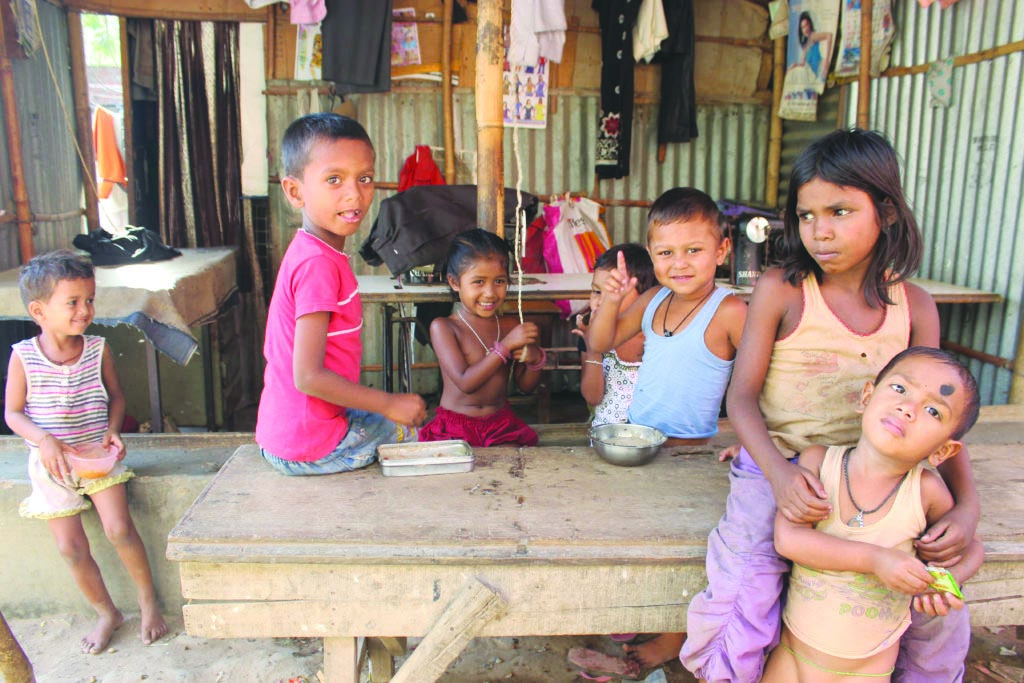
Pandemic-hit out-of-school children in Delhi
Even as elite and upper middle class urban households have smoothly switched to ICT (information communication technologies)-enabled learning from home, the loss of learning for the majority of India’s 500 million children and youth has been humongous. According to a recent study conducted by the India office of Unicef (School Closures in the Context of Covid, 2021), 42 percent children in the 5-13 age group in six states surveyed for the study haven’t accessed any remote learning content in the year after schools closed in March 2020. Worse, 36 percent of girls and 33 percent boys in the 14-18 age group didn’t access remote learning content either.
The impact of the huge damage that the knee-jerk decision taken in March 2020 by the BJP/NDA government to immediately and comprehensively shut down all education institutions countrywide, and to persist with this decision for over 52 weeks before belatedly passing the buck to state governments, is indicated by a recent report of the parliamentary standing committee on education (that parliament in perpetual chaos hasn’t found any time to discuss this critical issue is another story, see edit p. 10). According to the standing committee’s report, 240 million children countrywide have missed school for over a year; 70 percent of children have no access to online instruction; “online education is not real education”, and dropouts have increased in secondary education.
Therefore Pradhan, with his limited experience of managing a ministry which has mass-contact implications, has been thrown into a deep gorge and is confronted with the challenge of scaling two mountains simultaneously — repairing the massive damage suffered by the country’s education system during the 60 weeks pandemic lockdown and placing it back on track, and also implementing NEP 2020.
Like his predecessors (except Javadekar) in Shastri Bhavan, Delhi, Pradhan evidently believes he is accountable only to the PMO, Delhi and/or Mangalwari Mahal, Nagpur, head office of the RSS. A rain of emails, sms, WhatsApp and telephone calls made to the minister’s office supplemented by mewing pleas to his entourage of ignorant assistants highlighting EducationWorld’s status as India’s #1 education news magazine, global reputation, vintage and commitment to human capital development etc, failed to elicit an interview or replies to an emailed questionnaire.
Nevertheless, in the national interest and especially to ensure overdue justice to the world’s largest and most neglected child and youth population, your editors interviewed several highly knowledgeable and experienced education leaders and experts to offer valuable advice to the newly inducted Union education minister who needs it desperately as he confronts these two formidable challenges.
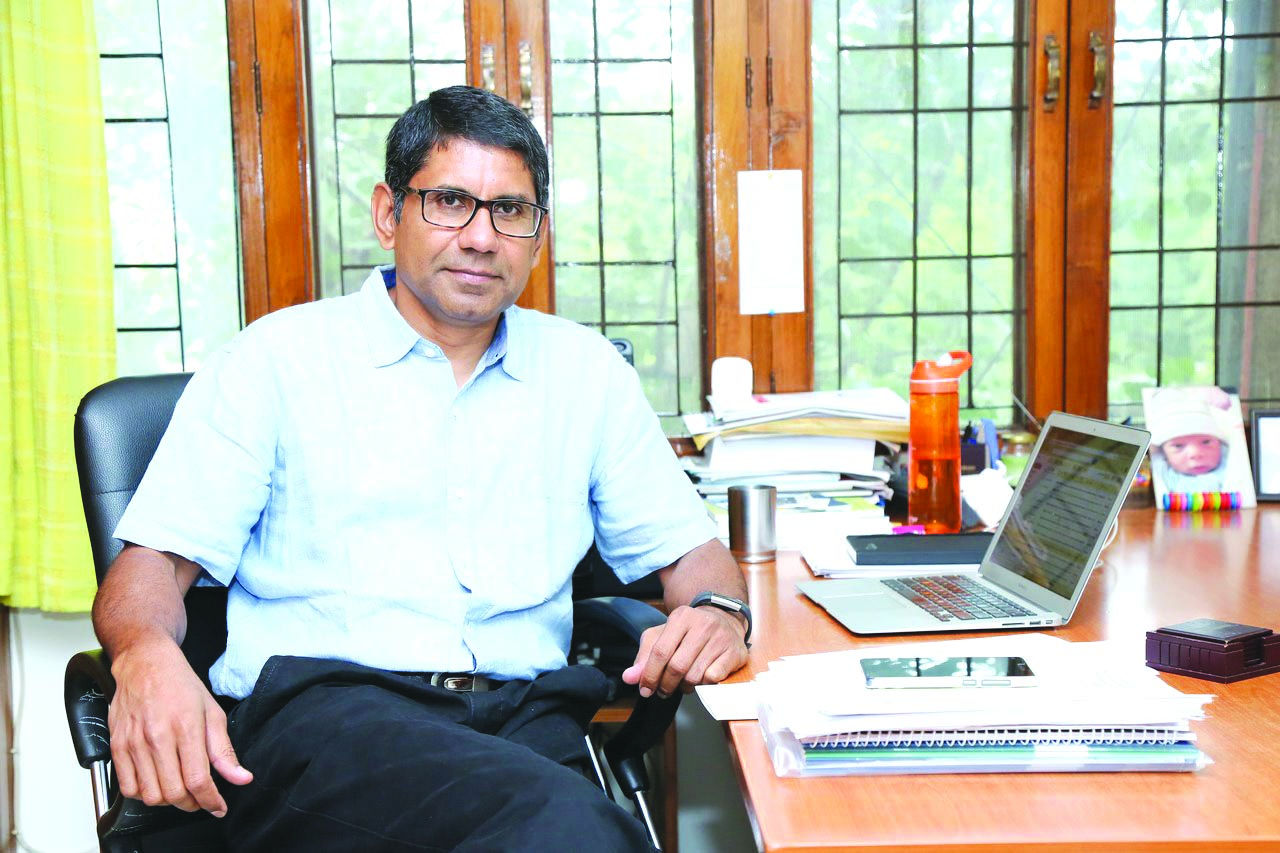
Parth Shah: MSME status plea
The forced closure of all education institutions countrywide for almost 18 months is certain to inflict huge learning loss on the majority of India’s children. But simultaneously, the prolonged lockdown of schools and colleges offers the new education minister a great opportunity to introduce overdue reforms that could transform the pandemic into a 1991 (economic liberalisation and deregulation) moment for Indian education. For a start, the BJP leadership should be persuaded to extinguish the anti-private education prejudice within the party and government. There is enough room for government and private schools to grow and flourish. Therefore, Pradhan should persuade the finance minister to immediately accord MSME (micro small and medium enterprise) status to private schools to enable them to avail bank credit and subsidised loans to tide over the Covid crisis. Secondly, the education ministry should quickly implement the proposal made in NEP 2020 to separate the functions of government as education provider, regulator, assessor and accreditor of schools and HEIs. In addition, top priority should be accorded to all children learning a vocational skill from primary classes. Moreover, the focus should be on learning outcomes rather than mandating infrastructure norms for private schools,” advises Dr. Parth Shah, former professor of economics at Michigan University (USA) and founder-president of the Centre for Civil Society, Delhi (estb.1997), a top-ranked think-tank with sharp focus on primary education.
According to Mumbai-based Dr. Swati Popat Vats, president of the Podar Jumbo Kids chain of 498 pre-primary schools and promoter-president of the Early Childhood Association of India, taking charge of the Union education ministry after the prolonged 60-week lockdown of education institutions countrywide, has presented Pradhan a “great opportunity to make a fresh start and construct a solid foundation that will stand Indian education across the spectrum in good stead for generations to come”.
“Indicating welcome awareness that children’s brains are 80 percent developed by age eight, for the first time, NEP 2020 has not only acknowledged but highlighted the critical importance of ECCE (early childhood care and education). By introducing the 5+3+3+4 restructured school education system, it has integrated ECCE with primary education. Moreover in July, the Union education ministry launched the very important and promising National Initiative for Proficiency in Reading with Understanding and Numeracy (NIPUN) to ensure that every child countrywide attains foundational literacy and numeracy (FLN) by the end of class III. The comprehensive NIPUN document provides a detailed roadmap for all children attaining FLN within the next five years and also for in-service training for all ECCE teachers. The new education minister should immediately make an official statement stressing the vital importance of professionally administered ECCE in the country’s government-run 1.6 million anganwadis that provide early childhood care and nutrition to over 80 million youngest children. When schools reopen, these children — and their teachers — should be given every incentive to restart their education the NIPUN way. Mr. Pradhan should not miss this opportunity to build a strong foundation for India’s youngest children,” advises Dr. Popat Vats.

Swati Popat Vats: fresh start opportunity
However Prof. Geeta Kingdon, chair of education economics and international development at the high-ranked University College, London, and president of the City Montessori School, Lucknow, the world’s largest single-city school (57,000 students in 14 campuses), believes the malaise of Indian education — the “elephant in the room” — which the KR Committee Report and NEP 2020 have ignored, is pervasive lack of teacher and institutional accountability in the country’s 1.20 million government schools.
“The plain truth discovered as far back as 1999 by the PROBE Report is that 25 percent of government school teachers are absent every day and half of those who do attend school aren’t teaching. The consequences of this reality, routinely swept under the carpet, is reflected in the annual ASER surveys of the globally respected Pratham Education Foundation, which have been reporting declining learning outcomes in rural primary schools countrywide for over a decade. Consequently, even poorest families have lost faith in government schools and are sacrificing consumption to enrol their children in budget private schools. This problem is mainly in the states where teachers unions are politically very powerful. Under Article 171 (3) (c) in eight large states of India including Uttar Pradesh which have bi-cameral legislatures, 8.33 percent of seats in the upper house are reserved for secondary school and college teachers. Moreover, teachers also serve en masse as polling booth managers during elections. This makes their unions very powerful and they are blocking all attempts to make teachers and government schools more accountable for children’s learning outcomes. In my opinion, government school and college teachers are public servants and as such should be debarred from contesting elections and be less visible at polling booths. Instead, SMCs (school management committees) appointed under s.28 of the RTE Act, 2009, and dominated by parents should be resurrected and empowered to ensure teacher and school accountability,” advises Kingdon.
Although it’s highly improbable that Pradhan, with no previous record of academia and the education portfolio, will address these deep-rooted problems of pre-primary-class XII education in his three-year tenure as Union education minister — general elections are due in 2024 — Prof. Kingdon believes that NEP 2020 offers opportunity to begin the reform process by implementing the comprehensive PARAKH (performance, assessment, review and analysis of knowledge for holistic development) and SSSA (State School Standards Authority)recommendations. “PARAKH offers the opportunity for syllabus and examination reforms and separation of state governments’ roles as provider, regulator and assessor of school education in which conflict of interest is inherent, to be supervised by a State Schools Authority. But since the SSSA is appointed by government, it would be advisable to also constitute an independent Schools Regulatory Authority based on the TRAI (Telecom Regulatory Authority of India) model to ensure equal treatment of government and private schools,” adds Kingdon.
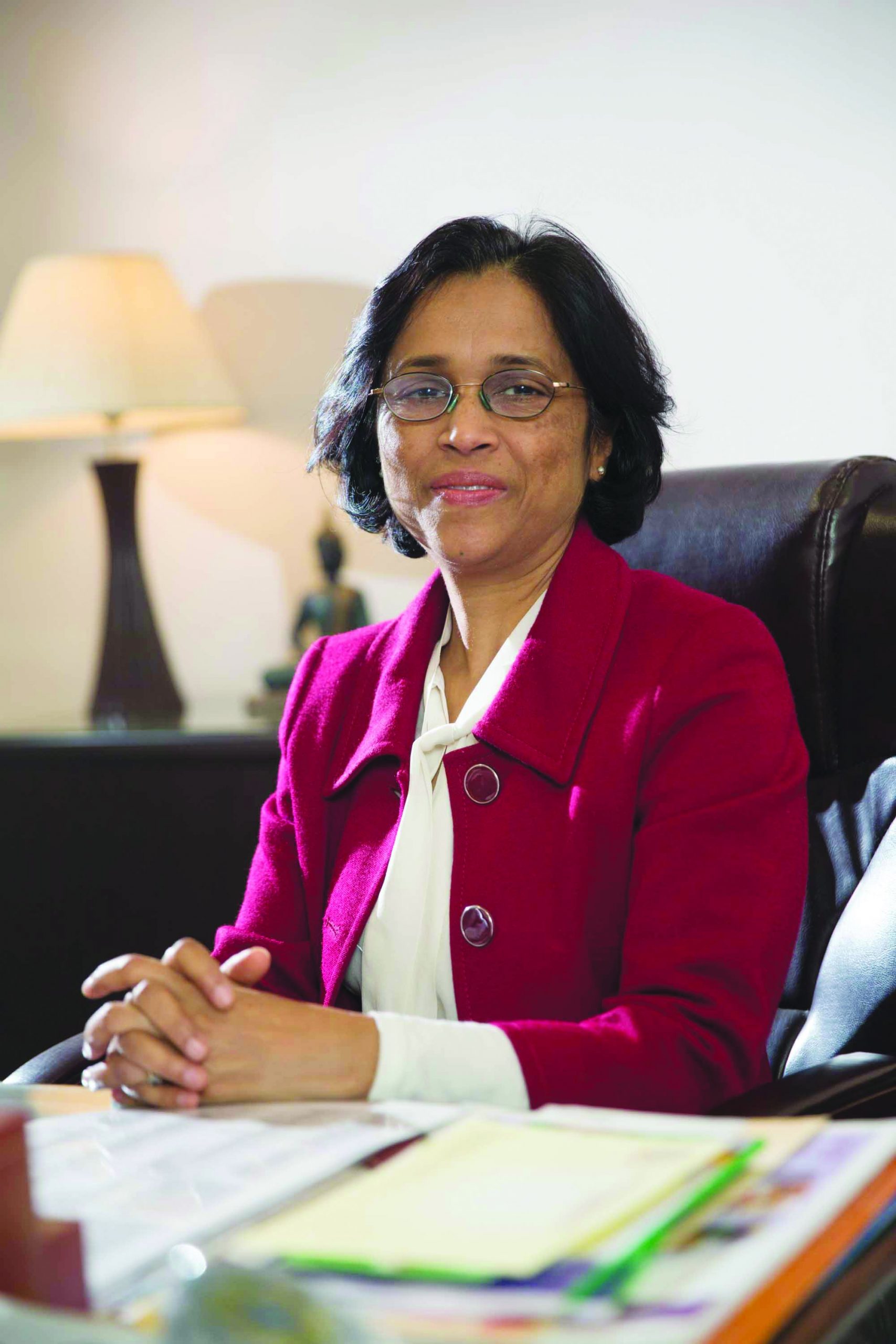
Kingdon: teacher accountability roadblock
Although reshaping and reconstructing the hitherto neglected pre-primary to class XII public education system to build strong foundations for the world’s largest child and youth population is the top priority of the new education minister, NEP 2020’s most intelligent recommendations are for restructuring higher education. In tertiary education, it recommends transformation of the country’s 40,000 colleges and 979 universities into multi-disciplinary undergrad institutions with flexible curricula combination of subjects, integration of vocational education, multiple entry and exit points and an academic bank of credits — all revolutionary ideas in Indian education.
The final NEP 2020 policy document proposes establishment of a Higher Education Commission of India (HECI), an “umbrella institution” of “public-spirited experts” to oversee four verticals which separate the regulatory, standards setting, funding and accreditation functions currently being discharged by the Union education ministry through subsidiary organisations (UGC, AICTE, NCTE etc). These autonomous verticals and HECI itself will be headed by highly-reputed independent academics.
“Certainly for restructuring and upgrading India’s higher education system, NEP makes overdue and excellent proposals. But it is essentially a policy document which requires deliberated and detailed implementation. After careful study of the policy document, I have articulated five initiatives to implement NEP 2020 to totally transform higher education, on several forums. First, the prime minister who has spoken about the transformative potential of NEP 2020 should establish a Prime Minister’s Advisory Council (PMAC) as the nodal agency to coordinate with all institutions to ensure successful implementation of NEP. Secondly, there’s need for an Education Minister’s Steering Committee chaired by the Union education minister to work continuously with all stakeholders to identify and remove policy implementation hurdles and bottlenecks. Third, because the success of NEP 2020 depends upon implementation of policy proposals in the states, I recommend a National Higher Education Ministers’ Council (NHEMC) comprising the education ministers of all states, chaired by the Union minister of education with the education secretary at the Centre as member-secretary.
“Moreover, an Empowered Standing Committee on Legal and Regulatory Reforms for Implementation of NEP (ESC) chaired by the Union education secretary is necessary to translate the vision, aims and objectives of NEP 2020. It should be empowered to propose legal and regulatory reforms across the education sector to implement the NEP. And lastly, I recommend a Vice-Chancellors’ Working Group (VCWG), chaired by the UGC chairman with selected vice chancellors/directors to flag and iron out policy implementation wrinkles at the institutional level. These measures will ensure the creation of a robust architecture that will tick all the boxes to ensure comprehensive execution of the well-conceptualised vision of NEP 2020,” says Dr. C. Raj Kumar, the erudite founding vice chancellor of the O.P. Jindal Global University, Sonipat, Delhi NCR (JGU, estb.2009).
Newly inducted Union education minister Dharmendra Pradhan would be well-advised to pay heed to the carefully researched advice of Dr. Raj Kumar because within a decade after JGU was promoted, as founding VC, he has nurtured and developed this private university with an aggregate enrolment of 6,650 students into a globally respected higher education institution which has won global encomiums for its contemporary syllabuses, world-class faculty and excellent learning outcomes.
The London-based Quacquarelli Symonds (QS) ranks JGU India’s #1 private university and among the Top 350 worldwide; EducationWorld ranks it among the Top 3 private universities countrywide and the Central government has conferred Institute of Eminence status upon JGU. An alum of Delhi, Oxford and Harvard universities, Dr. Raj Kumar taught in top-ranked universities in the US and Hong Kong before returning to India to establish JGU and transforming it into a genuinely world-class law and liberal arts institution in record time.
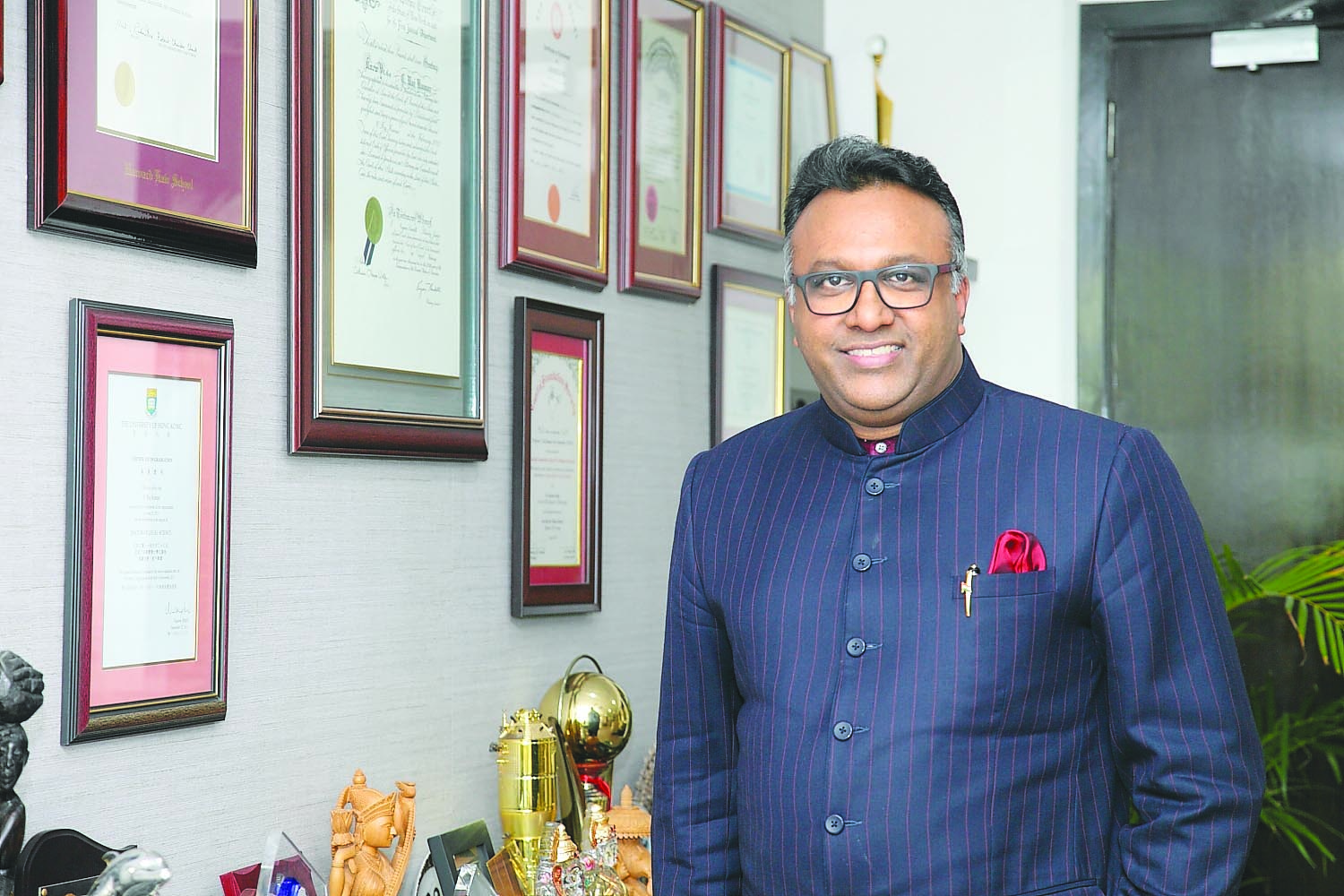
Raj Kumar: detailed implementation call
Yet the moot point is whether Pradhan or the top leadership of the BJP, i.e, prime minister Modi and Union home minister Amit Shah, place a premium on expert advice, especially on education reform which is low on the BJP agenda. Thus far, none of the three Union education ministers appointed by the BJP/NDA government which was voted to power in 2014 with great expectations, has done anything notable to reform and upgrade the country’s education system that has failed the world’s largest children and youth population.
On the contrary over the past seven years, the BJP leadership unduly influenced by regressive RSS intellectuals, has reduced the Centre’s annual outlay for education (as a percentage of GDP); recklessly appointed ideologically aligned but under-qualified academics to leadership positions in universities; wasted considerable time in re-writing history and spreading communal discord on college campuses.
Moreover, instead of concentrating on improving learning outcomes in the country’s 1.20 million government schools, the education ministry at the Centre has stood idly by as populist BJP governments in the states (UP, Gujarat, Karnataka, MP) have rashly enacted legislation to cap and regulate private school fees and denied them pandemic-related relief.
Is Dharmendra Pradhan, the new media averse incumbent of Shastri Bhavan, Delhi with his history of links with ABVP/RSS — institutions hostile to modernisation ideals — capable of meeting the twin challenges of repairing the damage inflicted upon India’s education system by the longest campuses lockdown worldwide, and implementing NEP 2020 by resisting RSS and party pressure to appoint sangh parivar faithfuls to the numerous regulatory councils and commissions mandated by NEP 2020? The auguries are not good.
Apply, apply. No reply
A common feature of all education ministers of the BJP/NDA government at the Centre (except Prakash Javadekar) is that they have resolutely declined to respond to EducationWorld’s repeated requests for interviews to explain the elaborate policies and plans they draw up for the world’s largest child and youth population. This despite the globally unique EW being India’s #1 education newsmagazine with over 1 million print and online readers.
Shortly after he was sworn in as the new Union minister for education on July 7, your editor sent several emails, SMS and made numerous phone calls to Dharmendra Pradhan to respond to the following questions in a Zoom interview or in writing.
Typically, he failed and neglected to acknowledge or respond to a questionnaire as under, raising doubts about his comprehension of the grammar of democratic governance and/or suitability for his new office. The innocuous questions posed:
1. Against the backdrop of the Covid-19 pandemic having forced shutdown of all education institutions from preschools to universities for almost 60 weeks — the world’s longest academic closure — what are your Top 5 priorities for placing Indian education back on the rails?
2. In recent months, the Centre has devolved the decision to reopen schools and education institutions on state governments. However, when do you propose to restart the Central government KVs, JNVs and universities?
3. The National Education Policy (NEP) 2020 was formally released in July 2020, over a year ago. But perhaps because of the pandemic, it has not gained traction. What are your first three priorities for implementing NEP 2020?
4. Despite a Supreme Court judgement ruling that choice of medium of instruction for children is of parents, NEP 2020 has recommended mother tongue as the medium of instruction in primary education. What’s your comment?
5. Notwithstanding the Supreme Court judgement in the T.M.A. Pai Foundation Case (2002), almost all state governments have enacted legislation to control and cap tuition fees charged by private schools. What’s your comment?
6. Against the global average of 5 percent, India’s annual outlay (Centre plus states) for education has averaged 3.5 percent for over seven decades. Several expert committees have recommended that it should be urgently raised to 6 percent. Do you agree?
7. What’s your timeframe to ensure globally benchmarked QEFA (quality education for all) in India?
8. Any other comment?
Restarting post-pandemic school education
The first challenge — and a large mountain to climb — for newly appointed Union education minister Dharmendra Pradhan is to get the world’s largest child and youth population estimated at 500 million back in schools, colleges and universities and learning. Since March 2020 when the BJP/ NDA government belatedly woke up to the threat of the novel Coronavirus, children have been cooped up in their homes for over 60 weeks — the longest lockdown of education campuses worldwide.
The argument that the majority of children who live in squalid slum dwellings and over-crowded homes are safer in school where they receive some learning and a free mid-day meal, is unheeded by politicians and education bureaucrats (see EW July cover story ‘Why Schools Should Open Right Now’, on www. educationworld.in). Recently, the parliamentary standing committee on education confirmed that 80 percent of children countrywide haven’t learned anything during the past one year, and that 70 percent of the child and youth population have no access to digital learning devices. Against this backdrop, we present a road map for newly sworn-in Union education minister Dharmendra Pradhan to get children back into schools and learning right away.
1. Classify teachers and higher education faculty as frontline workers and vaccinate them and all residing and serving in their homes.
2. Direct all schools countrywide to reopen after full sanitisation of campuses. In government schools, SMCs (School Management Committees) mandated by s.21 of the RTE Act, 2009, should endorse safety protocols such as masking, distancing and alternate day’s attendance, if necessary. In private schools, PTAs should be empowered to endorse safety protocols instituted by school managements.
3. In pre-primary education, in-class learning should be restricted to one hour per day, supplemented by 40 minutes of online learning. The NIPUN programme devised by NCERT, approved by the Union education ministry and endorsed by the Early Childhood Association of India should be wholly implemented.
4. As recommended by economics Nobel laureate Abhijit Banerjee and Pratham Education Foundation (PEF) CEO Rukmini Banerji (Economic Times, August 26) to address learning heterogeneity inside classrooms, the TaRL (Teaching at the Right Level) solution developed by PEF which requires teachers to quickly assess every in-class child’s oral maths and reading capabilities, and group children in clusters according to their competences for teaching-learning, is the best way forward.
5. A foolproof system of ensuring daily classroom attendance of government school teachers — strongly recommended by Geeta Kingdon, professor of education economics and international development at University College, London — should be urgently devised and implemented.
6. The Union education ministry should mandate a compulsory, nationwide 45-minutes daily in-service programme to train all pre-primary-class XII teachers in digital ICT (information communication technologies) for classroom usage.
NEP 2020 implementation priorities
The National Education Policy (NEP) presented to the nation on July 29, 2020 which substantially incorporates the recommendations of the five-member Dr. K. Kasturirangan (KR) Committee spread over 484 pages, prescribes radical restructuring of India’s school and higher education systems. On the positive side, it mandates greater autonomy for schools, colleges and universities; elimination of official discrimination between government and privately-promoted education institutions, and separation of government’s roles of provider, examiner, regulator and accreditation authority in school and higher education.
On the downside, NEP says state governments will establish several regulatory committees for policy-making, operating (government) schools, accrediting and syllabus formulation under an SSSA (State School Standards Authority) and similarly four independent verticals for regulation, accreditation, funding and standards setting under a Higher Education Commission of India (HECI) for raising academic standards in higher education.
However, the 62-page NEP 2020 document is essentially a policy guideline with minimal implementation details. For the newly inducted Union education minister Dharmendra Pradhan who has assumed office at a difficult time with all education institutions having been locked down for over 15 months over fear of the novel Coronavirus infecting children and youth, your editors advise the following NEP implementation priorities.
1. Ensure all government schools are restructured to include NEP 2020 implementation priorities early childhood education under the 5+3+3+4 structure proposed by NEP 2020.
2. Ensure that early childhood care and education in 1.6 million government anganwadis is provided under the education ministry’s NIPUN (National Initiative for Proficiency in Reading with Understanding and Numeracy) programme — endorsed by the Early Childhood Association of India — to ensure that every child in the country attains foundational literacy and numeracy (FLN) by the end of grade III before 2026-27.
3. Decree introduction of vocational education from class VI in all public and private schools.
4. Mandate examinations/testing to monitor learning outcomes of children in classes III, V, VIII.
5. Direct NCTE to speed up formulation of a new National Curriculum Framework for Teacher Education (NCFTE). Meanwhile, decree 45 minutes of daily teacher training in new ICT (information communication technologies) for classroom usage.
6. To implement NEP 2020’s widely welcomed reforms in higher education, action the proposals of Dr. C. Raj Kumar, founding vice chancellor of the O.P. Jindal Global University (see p. 51).
7. Immediately establish the autonomous National Educational Technology Forum proposed by NEP 2020.
8. Begin the process of persuading the Union cabinet, PMO and state governments to substantially increase allocations for education in their 2022-23 budgets as the first step towards increasing national expenditure (Centre plus states) to 6 percent of GDP as recommended by NEP 2020.























